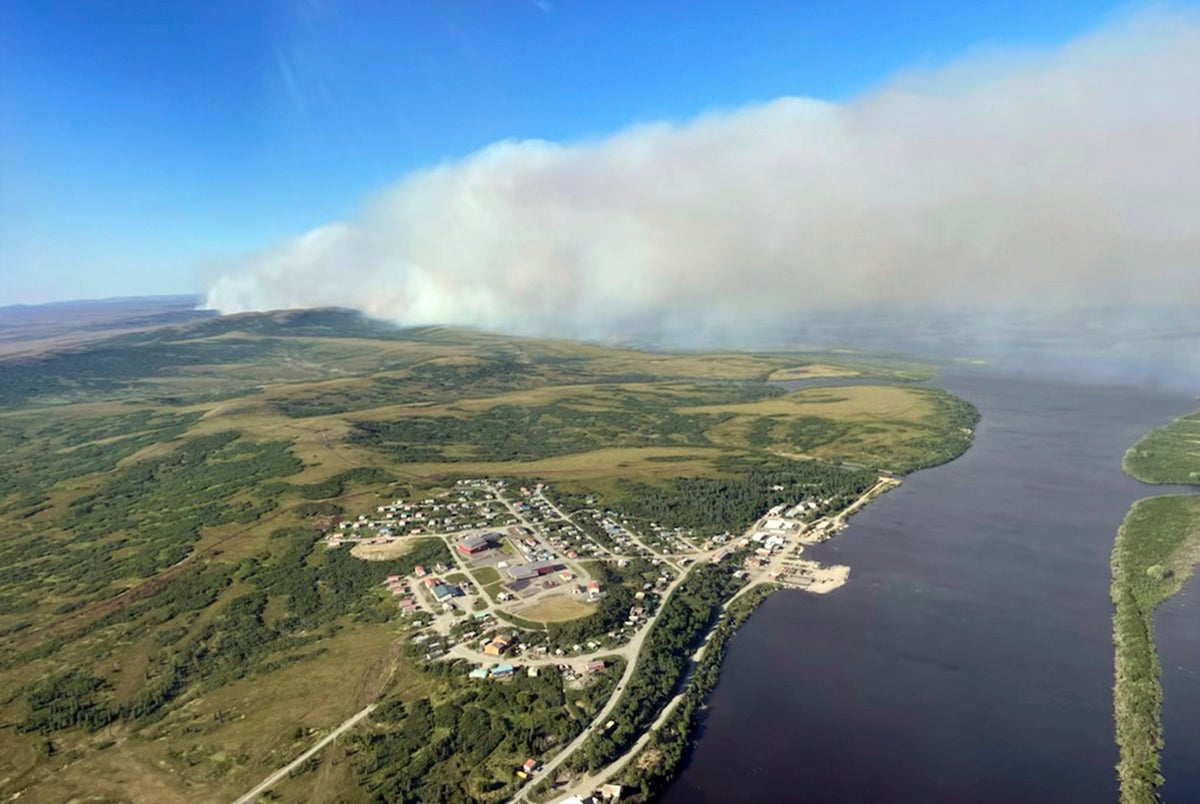
A large fire burning in the tundra of southwest Alaska continued to move toward an Alaska Native village on Saturday, but fire managers said its pace had slowed.
The East Fork fire, which was started by lightning May 31, remained about 5 miles (8 kilometers) from the Yup’ik village of St. Mary’s, a statement from the Alaska Wildland Fire Information said.
The fire was listed at 169 square miles (438 square kilometers) in size, more than double the last estimate. The increase was attributed to better mapping.
Tundra is a treeless area covered with low-lying plants, and the fire was being fed by extremely dry grass and brush filled with alders and willow.
There were 180 personnel working the fire, with more crews expected to arrive Monday.
There are no mandatory evacuation orders, but about 700 residents of St. Mary’s and the nearby community of Pitkas Point were told to prepare in case they needed to leave.
There have been voluntary evacuations by residents, as well as others living in the nearby communities of Mountain Village and Pilot Station.
Early Saturday morning, firefighters completed a defensive burnout on the west side of the East Fork of the Andreafsky River to protect equipment and structures near a fish weir — a fence placed in flowing water to direct the movement of fish. The weirs have traditionally been used to catch fish but also can be used for management and research of a fish stock, according to the Alaska Department of Fish and Game’s website.
St. Mary’s, a subsistence community, sits on the bank of the river. Firefighters were also working to protect structures on the east side of the weir, as well as fortifying a fire line a half mile (800 meters) outside St. Mary’s. Aircraft have also been dropping retardant along that line.
Boats have been used to shuttle firefighters to protect structures upriver of St. Mary’s. Crews also have also been working to protect Alaska Native properties.
Hot, dry conditions were expected to continue Sunday, but a low pressure system moving in from the west could bring favorable conditions and a chance of showers by Monday. It could also bring a wind switch that would help push the fire away from the villages, officials said in the statement.
St. Mary’s and Pitkas Point, which is situated to the south at the confluence of the Andreafsky and Yukon rivers, are located about 450 miles (724 kilometers) west of Anchorage.







